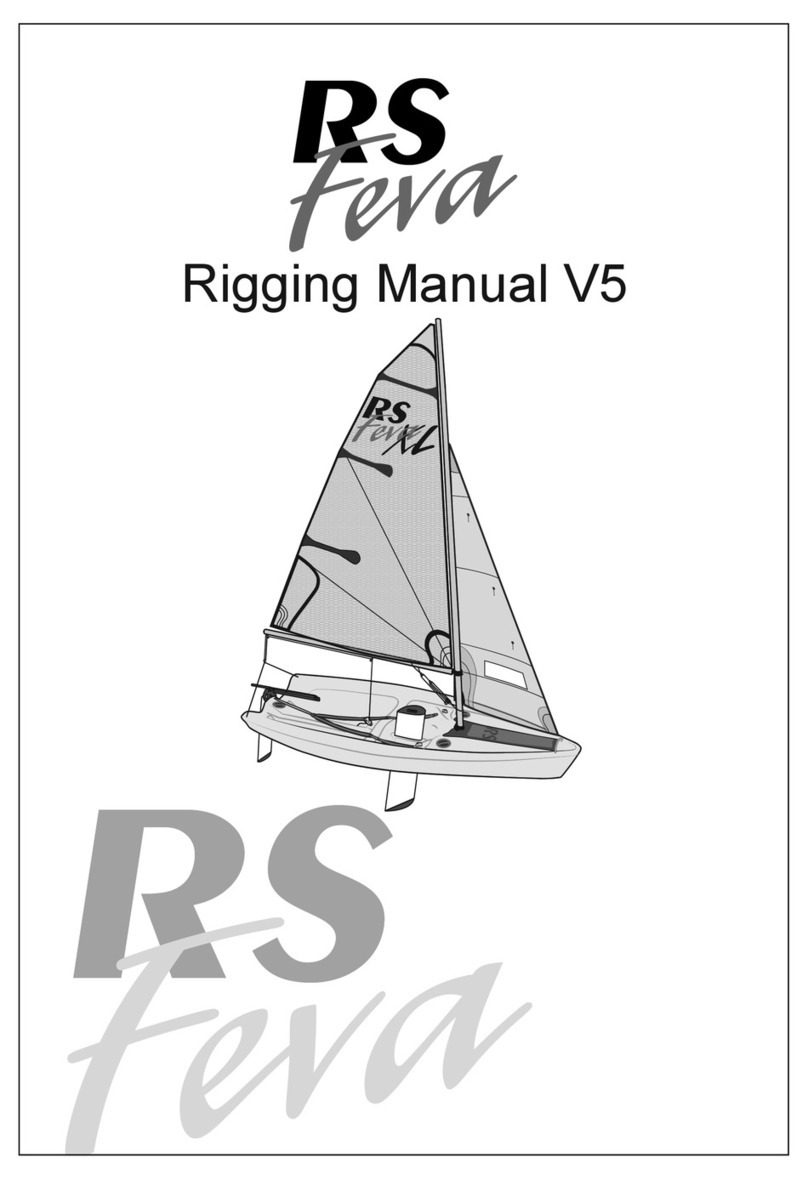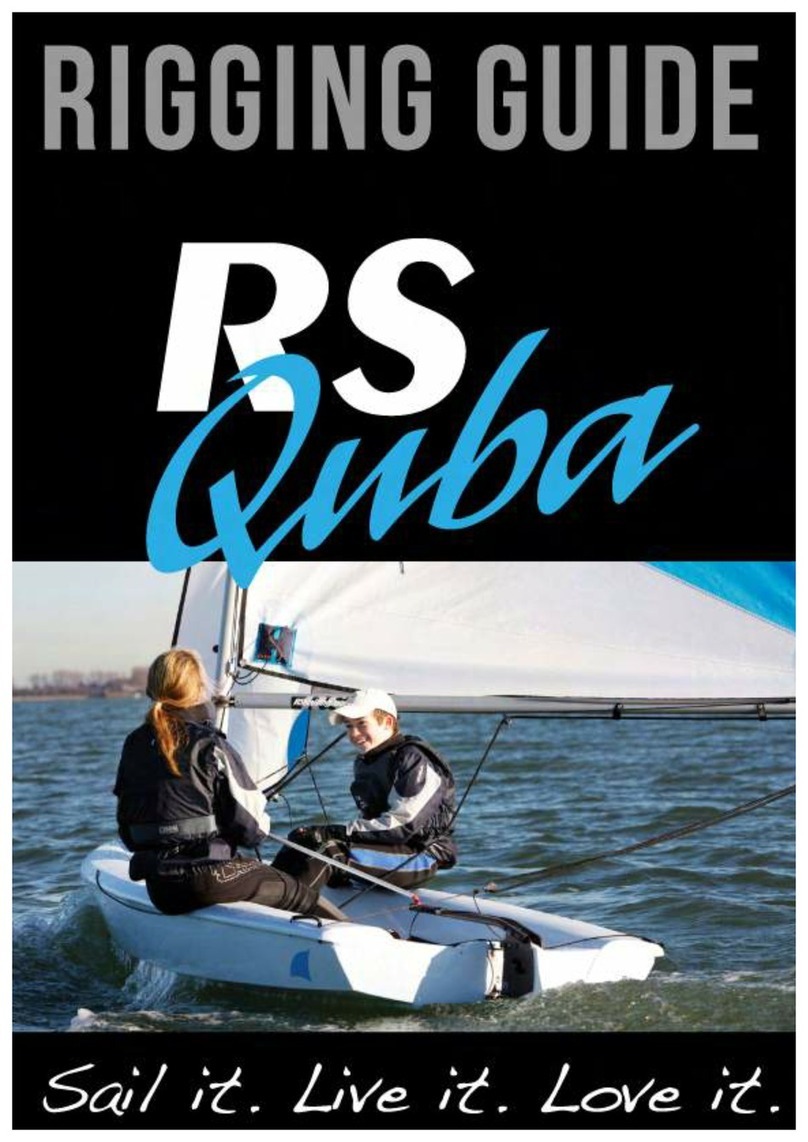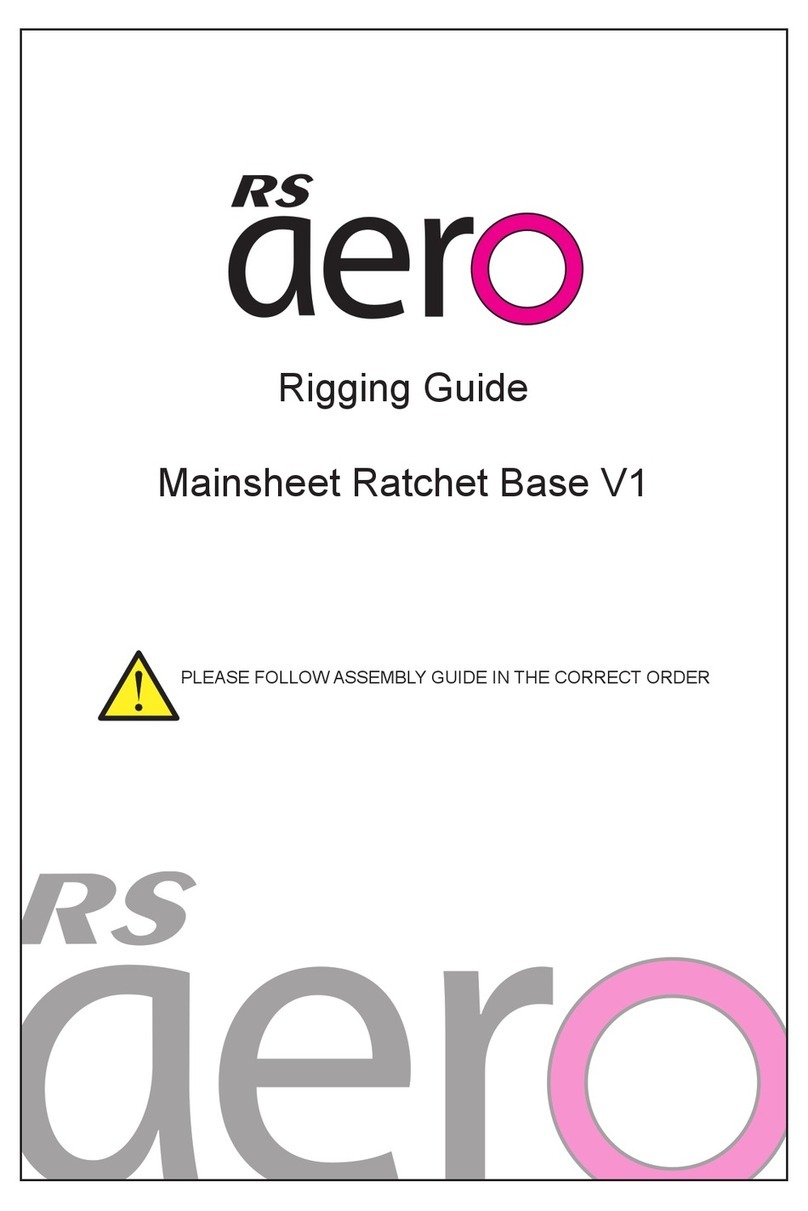when hoisting or dropping the kite. For the first trial, the wind should be no more than
10-12 knots.
Hoisting the Gennaker
To hoist the gennaker, bear off onto a broad reach and ensure that there is plenty of
room to leeward. Ease the mainsheet right out, so that the boom is nearly touching
the shroud, and ensure that the kicker is eased as usual for downwind sailing. In
most conditions, you should be able to stand up in the boat and steer with the tiller
between your legs. Pull on the gennaker halyard to hoist the gennaker as quickly as
possible. Once the gennaker is all the way up, sit back down on the windward side
deck, pick up the gennaker sheet and pull tension on so that the wind fills the
gennaker. Head up slightly to gain speed. You will probably need to grip the
gennaker sheet in your tiller hand while you pull the mainsheet back in to the new
point of sailing. For those of you familiar with asymmetric sailing, you will remember
how important it is to ease the kite as far as possible, so that the luff is constantly on
the verge of curling. An over-sheeted kite is such a killer to speed. Conversely,
nothing will drop you in the drink faster than a collapsing kite – so forget the mainsail
and stay sharply focused on the luff of the kite!
Gybing
To gybe the gennaker, bear off while continually easing the gennaker. Put the
gennaker sheet in your tiller hand and reach in to uncleat the mainsheet. The quicker
you do this the better, as the boat will have slowed down and the mainsheet will
have loaded up – you’ll get to know this feeling and react to it faster each time! While
sailing on a broad reach, pick up the windward gennaker sheet with your front hand
and pull it in. This ensures that you are able to initiate the gybe as you bear off and
while the gennaker is slightly hooked to windward at the clew. The gennaker should
still be filling normally and helping to speed the boat into the gybe. As you initiate the
gybe, step across the boat, pulling the new gennaker sheet in as far as you can to
ensure that some wind remains in the gennaker throughout the manoeuvre, and
avoiding a collapsing gennaker. Once you are on the new gybe, pull tension on the
gennaker sheet, head up slightly, and pull in the mainsheet.






































